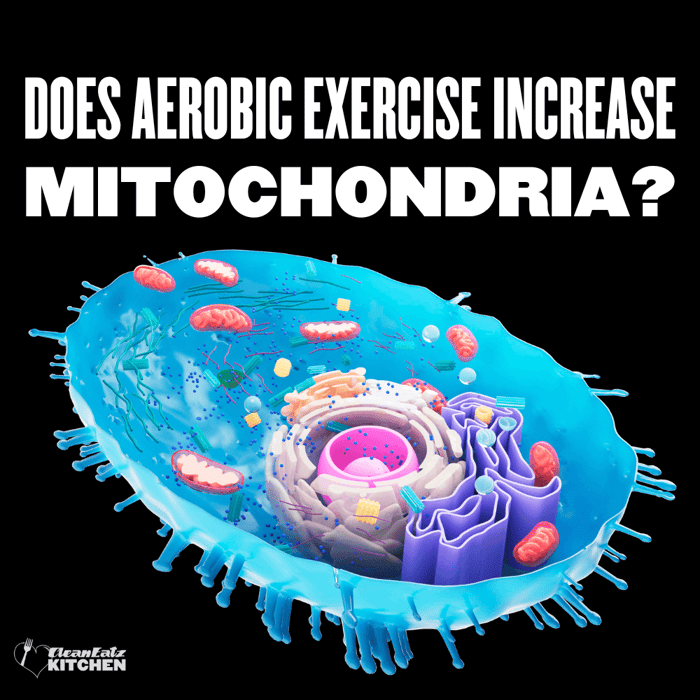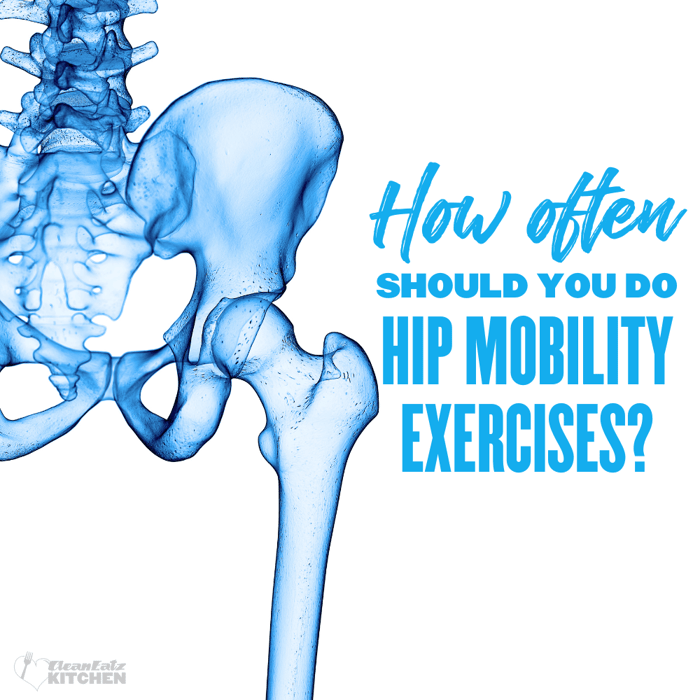Does Aerobic Exercise Increase Mitochondria? (How Fast & How Much)

Exercises & Fitness
09/26/2025 1:20pm
5 minute read
What “more mitochondria” really means
Exercise can increase mitochondrial content (more mitochondria per muscle fiber) and mitochondrial function (better respiration/ATP production). Scientists often track this using markers like citrate synthase activity, COX enzymes, mitochondrial protein content, and direct respirometry.5, 1
How aerobic exercise signals mitochondria to grow
- Energy stress & calcium: Exercise increases AMP/ATP and Ca2+, activating AMPK, CaMK, and p38 MAPK.
- Master coactivator: These signals converge on PGC-1α, which turns on genes for mitochondrial biogenesis and dynamics (fusion/fission; mitophagy).1
- Training = remodeling: Over weeks, the mitochondrial network becomes denser and more efficient at using oxygen.6
Human evidence (how fast, how much)
- Rapid response: Increases in mitochondrial proteins/enzymes can show up within 7–10 days of training; gene/protein signals may rise after the first week.7, 2
- 2–6 weeks: Repeated studies show improvements in mitochondrial respiration and citrate synthase after just 2 weeks of structured training.3, 4
- 12 weeks and beyond: Both interval and steady endurance programs raise mitochondrial content and cardiorespiratory fitness, with dose and intensity shaping the size of the effect.8, 9
HIIT vs. steady “zone-2” (both work)
Head-to-head trials in humans find that both moderate-intensity continuous training (MICT; think steady “zone-2”) and high-intensity interval training (HIIT/SIT) increase mitochondrial markers. Some short studies show faster gains with higher intensities, especially early on; longer programs often end up with similar increases when total work is matched.3, 8, 5, 9
Does age matter?
Good news: older adults still adapt. Studies show aerobic training increases mitochondrial biogenesis and quality-control proteins in both young and older adults, although the size of improvements may vary.10 Resistance training also supports mitochondrial function with age (complements your cardio).11
A practical weekly plan
Here’s a mitochondria-friendly template you can scale up or down (aim to meet the U.S. activity guidelines of 150–300 min moderate or 75–150 min vigorous per week).12
- Option A — Steady focus (zone-2): 3–5 sessions/week × 30–45 min at a pace where you can talk in sentences (RPE 5–6/10).
- Option B — Intervals:2 steady sessions + 1–2 HIIT sessions. Examples:
- 4×4 min hard (RPE 7–8/10) with 3-min easy between; warm-up/cool-down 10 min.
- 10×1 min hard/1–2 min easy (or bike sprints for trained folks: 6–8×30 s all-out with 2–3 min easy).
- Strength 2 days/week: Helps performance, aging, and complements mitochondrial health.11
Need structure that fits your calorie goals? Our calorie-controlled meal plans and protein-forward snacks make training days simple—see exact macros on our Nutrition Info. Related reads: How much exercise per day? · How to set calorie goals · High-protein diet.
Nutrition to support mitochondrial gains
- Protein: Aim for ~1.2–1.6 g/kg/day (higher if you train hard) to support recovery.
- Carbs around key sessions: Especially for intervals—fuel helps you hit quality workloads that drive adaptation.
- Overall energy: Chronic under-fueling can blunt training responses; match intake to your plan.
FAQs
Will walking help?
Yes—brisk walking counts. Keep it moderate (you can talk, not sing) and build to 30–45 minutes most days. Intervals are optional.
How long until I notice changes?
Cellular markers can improve in 1–2 weeks; fitness and endurance usually feel noticeably better by 3–8 weeks, with continued gains over months.2, 3
Is HIIT “better” than steady cardio?
Both increase mitochondria. HIIT can be more time-efficient early on, while steady work is easier to recover from and rack up minutes. Many people blend both.8, 3
Any safety notes?
If you’re new to exercise, have heart/metabolic conditions, or take medications, talk with your clinician first and progress gradually.
References
- Perry CGR et al. Molecular basis of exercise-induced mitochondrial biogenesis in skeletal muscle. Comprehensive Physiology (2018).
- Egan B et al. Time-course analysis of mitochondrial markers during early training. PLOS ONE (2013).
- MacInnis MJ et al. Superior mitochondrial adaptations after 2 weeks of HIIT vs work-matched MICT (humans). The Journal of Physiology (2016).
- Batterson PM et al. Two weeks of HIIT increased skeletal muscle mitochondrial respiration in sedentary adults. J Appl Physiol (2023).
- Bishop DJ, Lee MJ-C, Picard M. Exercise as Mitochondrial Medicine (how prescription affects adaptations). Annual Review of Physiology (2025).
- Granata C et al. High-intensity training induces non-stoichiometric changes in the mitochondrial proteome. Nat Commun (2021).
- Spina RJ et al. Mitochondrial enzymes increase after 7–10 days of endurance training (humans). J Appl Physiol (1996).
- Gillen JB et al. 12 weeks of SIT vs MICT: similar gains in citrate synthase (mitochondrial content). PLOS ONE (2016).
- Mølmen KS et al. Systematic review/meta-regression: endurance, HIIT, and sprint training all raise mitochondrial content in humans. Sports Med (2024).
- Konopka AR et al. Aerobic training increases mitochondrial biogenesis proteins in young and older adults. J Gerontol A (2013).
- Porter C et al. Resistance training improves skeletal muscle mitochondrial respiration in older adults. J Gerontol A (2015).
- U.S. Physical Activity Guidelines (adults: 150–300 min/wk moderate or 75–150 min/wk vigorous). HHS (2018) | Overview.
- Burgomaster KA et al. Six sessions of sprint-interval training increased muscle oxidative potential in 2 weeks. J Appl Physiol (2005).
Educational content only; not medical advice.
Related Articles
How Often Should You Do Hip Mobility Exercises?
7 minute read
How To Make the Most of a Home Gym and Limited Space
6 minute read



